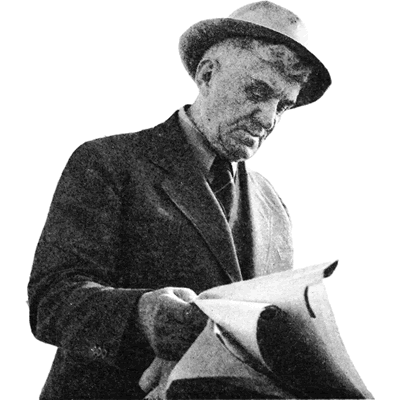Austin E. Cap Lathrop

Austin E. Lathrop arrived in Alaska as a young man before the Gold Rush, built a commercial empire across the territory and served 18 years on the University of Alaska Board of Regents.
Lathrop, born in Wisconsin, started a stump-pulling business there in his mid-teens. When he heard of Seattle’s great fire of 1889, he moved to help rebuild and became known as the successful “boy contractor.” He then founded a railroad in Anacortes, Washington, but lost everything in the economic panic of 1893. Two years later, he bought a 110-foot coal- and sail-powered ship and began freighting for miners on Cook Inlet. From that point on, he was “Cap.”
Expanding his business enterprises to Valdez, Cordova, Anchorage and eventually Fairbanks, Lathrop branched into apartments, lumber, banking, beverage sales, coal mining, movie theaters and media. He married twice but lost both wives, one to the relative comforts of Seattle and the other to illness.
Lathrop was named a university regent in 1932. By then, he was “a veritable one-man chamber of commerce,” as Terrence Cole ’76, ’78, a UAF history professor, described him in a 2010 history of the Alaska statehood movement, “Fighting for the Forty-ninth Star.”
“A man living in a home heated by the coal from Cap’s mine, or in one of Cap’s apartments, could apply for a loan at Cap’s bank to pay for his children to attend Cap’s university,” Cole wrote about the average Fairbanks resident in the 1940s. “At the end of the day, he could watch a movie in one of Cap’s theaters, drink Cap’s beer, listen to Cap’s radio station, or read Cap’s newspaper.”
He even could watch Cap’s one movie, “The Chechahcos,” a Gold Rush story filmed in Alaska and released in 1923. Though popular in Alaska, it was a “financial and critical flop” nationally, Cole noted.
Lathrop was best known in Fairbanks as the owner of the Daily News-Miner, KFAR radio and the Empress and Lacey Street theaters, but the Healy River Coal Corp. was his most significant enterprise. He became president in 1924.
The coal, hauled 100 miles from Suntrana on the Alaska Railroad, supplied electricity to the huge gold-mining dredges that carried the Fairbanks economy through the Great Depression. The coal also heated and powered numerous other businesses and homes throughout Alaska’s Railbelt.
A staunch opponent of statehood because of the taxes it seemed likely to require, Lathrop was nonetheless personally generous when the university needed help.
In late 1947, Lathrop interrupted a regents meeting to call his bank and have it cut a $10,000 check to the university so it could cover its payroll, according to fellow regent Leo Rhode’s account to Neil Davis ’55, ’61, author of “The College Hill Chronicles.” Lathrop eventually loaned the university $25,000, more than 10 percent of the total put up by Alaskans to cover the shortfall caused that year by the Territorial Legislature’s bounced checks.
Lathrop died at age 84 when struck by a coal car in Healy on July 26, 1950.
More online about Cap Lathrop:
- A profile by Bruce Parham and Walter Van Horn at the Cook Inlet Historical Society’s website, Legends & Legacies, Anchorage, 1910-1940
- A profile at UAA’s Lit Site Alaska
- A UA Journey page about Lathrop
- A profile published by the Fairbanks Daily News-Miner, May 28, 2000, in a collection describing 50 prominent Fairbanksans


